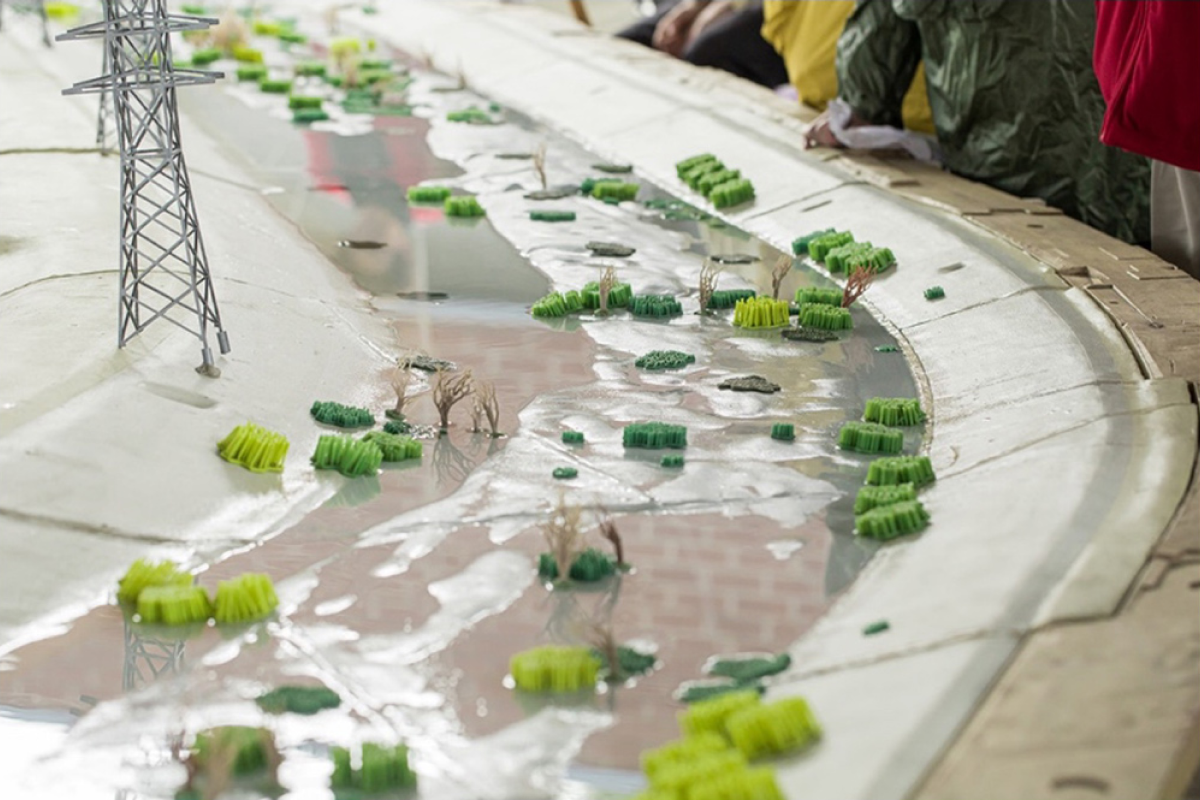Imagine restoring a 51-mile-long concrete river—running through the heart of the Los Angeles Basin in California—into a vibrant corridor reconnecting fractured communities and ecosystems.
In the latest EWN® Podcast, host Sarah Thorne and cohost Amanda Tritinger from the US Army Corps of Engineers talk with landscape architects Alex Robinson, associate professor at USC School of Architecture and USC Landscape Architecture alumna Leslie Dinkin from the Kounkuey Design Initiative in Los Angeles. They discuss the use of storytelling, augmented reality, and physical modeling tools to engage people along the river in cocreating a new future for themselves and for the river.
Listen to the full EWN podcast episode here.
Alex’s work is rooted in his personal experiences with the City of Los Angeles (LA) and its infrastructure, including the LA River, and finding out how people spend their days interacting with these interesting landscapes as they shape their lives and create art. “My work is split between these two parts,” Alex says. “I’m really interested in identifying these places as incredible landscapes while also thinking about how we actually design these things effectively, in a way that brings together all of the assets that society has and really works hard on all levels to fulfill the potential that they have as a landscape, as a place, in the city.”
Leslie recently graduated with dual master’s degrees in landscape architecture and heritage conservation from USC School of Architecture, studying under Alex and working with him at the Los Angeles River Integrated Design Lab (LA-RIDL). Leslie grew up in LA but went to college in Colorado and worked as an outdoor educator for several years in the Rocky Mountains. As she explains, “I would take students up 14,000-foot mountains where we’d swim in Alpine lakes. But the longer I spent in these places, the more I felt I was teaching students that connection to nature only happens when you are way out there, when you can’t see any people or buildings; but this is not where most people live. That prompted me to return home to LA to pursue a master’s degree in landscape architecture and urbanism.” She adds, “After a year in that program, I started a second degree in heritage conservation and realized pretty quickly that I couldn’t design anything new if I didn’t learn about everything that was there before. And so extensive research, storytelling, and listening to community stories quickly became a part of my practice.”
